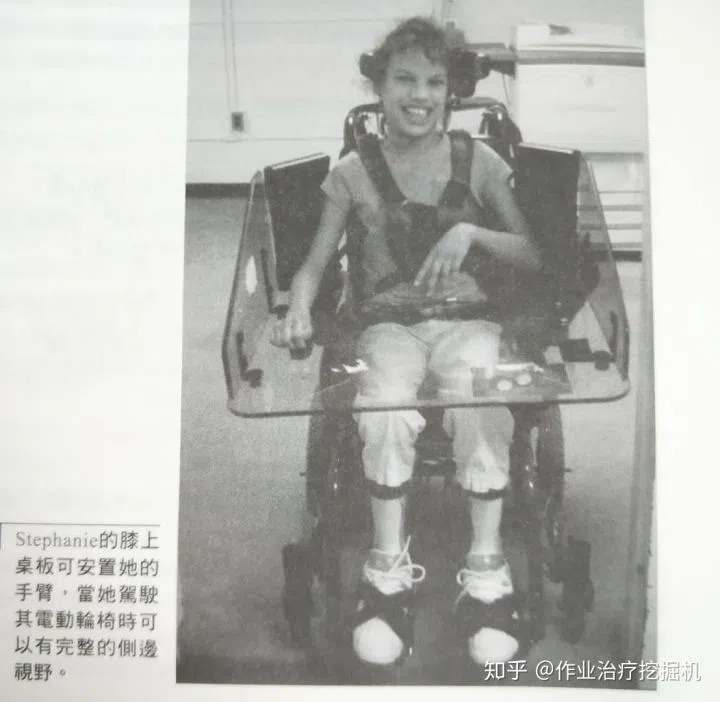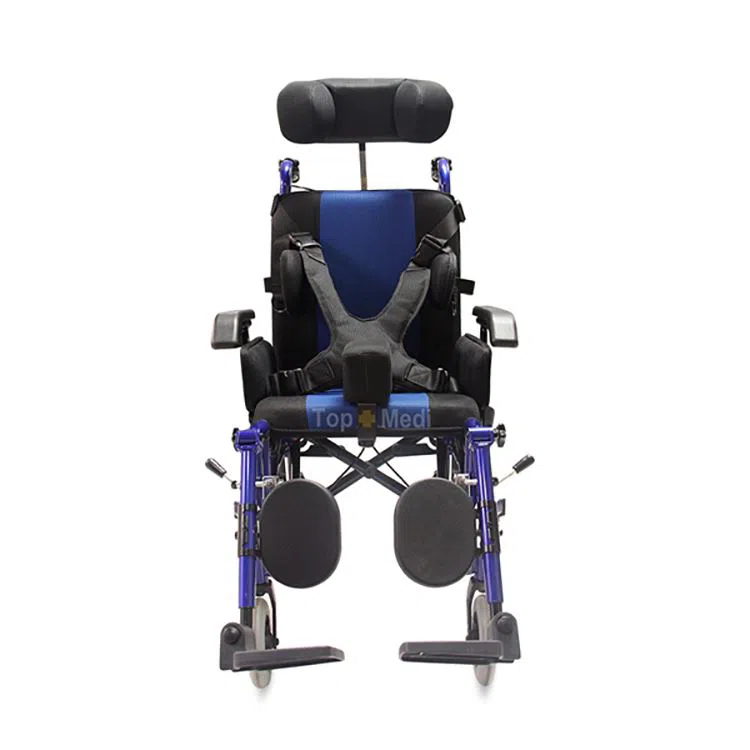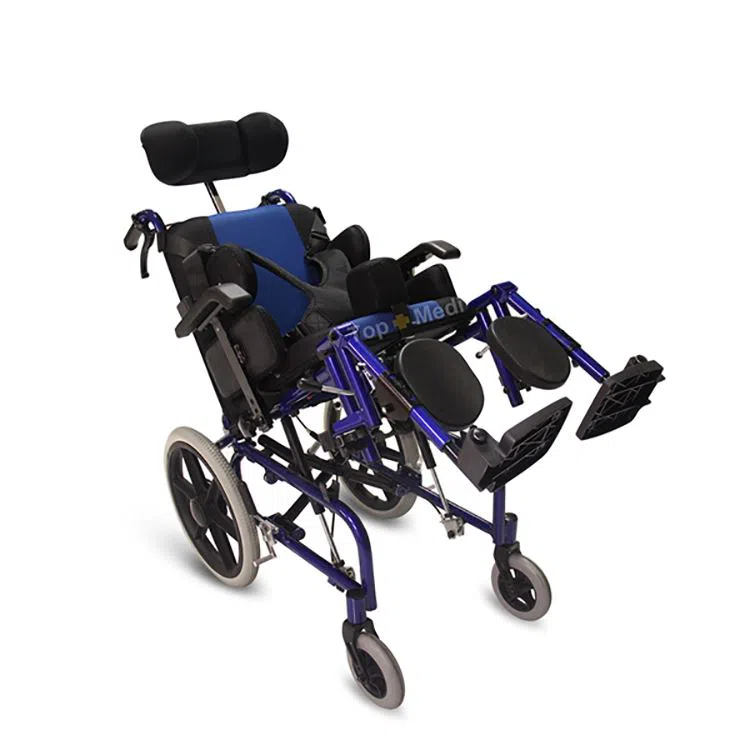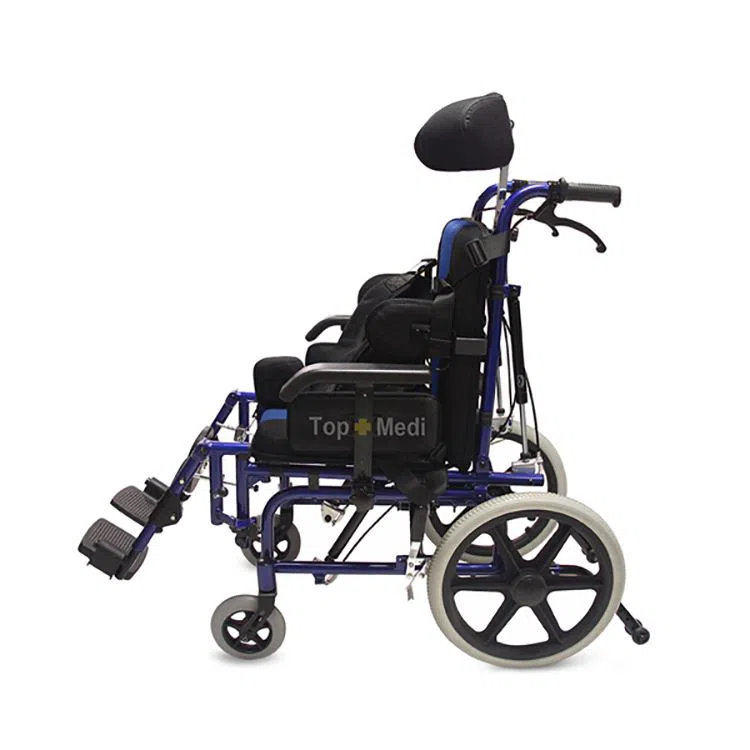Stephanie is a girl who is good at communication and energetic. She was diagnosed as mixed ataxia/hypotonic cerebral palsy and went to school in the children's rehabilitation hospital. She began to want the independence that ordinary teenagers seek. Although Stephanie can't speak, she often smiles or cries. She can express her needs and expectations through facial expressions and eyes.
Stephanie's core tension is low, while the peripheral extensor tension increases from time to time. Stephanie has almost no balance reaction and no functional protection reaction in the unsupported sitting position. The trunk cannot be controlled well, and the arm cannot be used freely. Because of the strong tension, Stephanie's hips and knees will become straight, and the pelvis will tilt backward with compensatory bulges. Due to the unstable tension of her lower limbs, she could not keep her feet on the ground all the time. Stephanie can keep her head in the middle to maintain visual contact with her surroundings, but she will turn her head to one side and trigger atnr to start arm movements to retrieve objects. The other arm becomes shoulder abduction, scapula contraction and elbow bending. Stephanie could not perform an adjustable autonomous midline movement and functional grasp, although she could reach out and touch the switch briefly. Stephanie is not as capable of moving independently in space as her peers. She can roll and move for short distances as if she were crawling in the sea.
Using the biomechanical reference system of children's functional posture, Stephanie's communication and motor functions were enhanced. Stephanie offers a support seat system that includes a powerful seat and backrest, abdominal belt, side body support, hip flaps, chest straps, front knee blocks, and foot pads or magic straps. Stephanie has a knee table on her upper limb. She has enough posture and head control. The electric wheelchair can be driven by the air surface liquid (ASL) approach head rehearsal system. This is a semicircular head restraint, in which a sensor is embedded, which can read the relative position of the head without body contact. Through the training of occupational therapists, the adjustment ability of head and upper limb control has been improved. Stephanie can control the left shoulder, activate the restart switch in front of the knee table, and have enough head control ability to successfully control the wheelchair moving in the crowded school corridor. She also uses head control movements to use her communication aids, which are more effective than arm movements.
Despite these potentials, Stephanie still needs adults to monitor her behavior at school. She couldn't get through the doorframe safely. Stephanie helps start the autonomous movement of her arm by turning her head to trigger atnr, which will make the ASL sensor unable to work accurately, and her eyes will have less chance to see the space she needs to see. Stephanie's arm needs external control to keep her head in the middle of the switch. In order to enhance Stephanie's safety and independence, occupational therapists created a system:
(1) Wrap Stephanie's arm in the attachment of the knee table (no arm restraint)
(2) Full speed allowed
(3) Strong enough to withstand Stephanie's extreme irregular tension
(4) This is something family members and caregivers can handle
(5) Adjustments can be made in unpredictable situations
The therapist designed a knee table with two removable plexiglas on the side and padded front panels on both sides to prevent Stephanie's elbows from getting caught between the back of the chair and the side of the table. To reduce the weight of the device. The side plates are inclined. When Stephanie's chair "grows" with her height, the device on the knee table can also be adjusted. Of course, larger folding tables can be made in a few years. Although Stephanie's initial desk looked different from others', she was depressed, but when she began to like her independence in school and community, her hesitation soon disappeared.

I'm glad to tell you that we start work today. I think you may have heard of this virus, but it will not affect our communication. So if you need my help, please feel free to let me know.
Guangzhou Tomedi Co., Ltd. is a leading professional company dedicated to providing cost-effective medical products for the elderly and the disabled.
Topmedi cerebral palsy wheelchair Hualuntang cerebral palsy wheelchair TRW958LBCGPY:






















